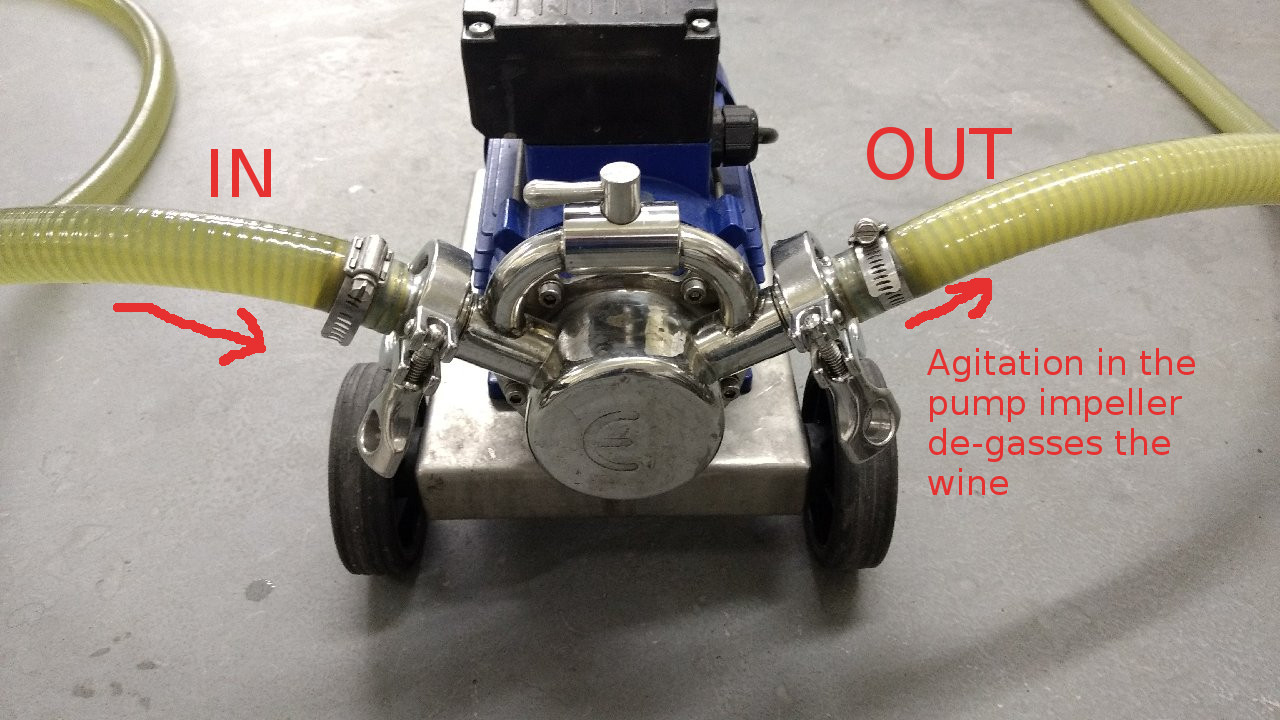The concept seems strange to me... I usually just age it in bulk before bottling and haven't noticed any carbonation in the bottled wine. Is there something I am overlooking, or is all the drilling/degassing I see people doing just so they can get the wine in the bottle quicker?
You are using an out of date browser. It may not display this or other websites correctly.
You should upgrade or use an alternative browser.
You should upgrade or use an alternative browser.
Degassing? When? Why?
- Thread starter Blue-Frog
- Start date

Help Support Homebrew Talk:
This site may earn a commission from merchant affiliate
links, including eBay, Amazon, and others.
Stigmond13
Well-Known Member
- Joined
- Sep 14, 2014
- Messages
- 64
- Reaction score
- 12
You've answered your own question. If you leave for 6 months there is very little chance of carbonation after bottling (unless you are backsweeting without killing of the yeast of course).
bernardsmith
Well-Known Member
But many folk degas during active fermentation. This to reduce the pressure on the yeast and perhaps to reduce the acidity (carbon dioxide can form carbonic acid and if the must is close to the yeast's tolerance for acidity then removing the CO2 can be effective.
Blue-Frog
Well-Known Member
Ok Thanks. So would it pretty much be true that degassing is not a common commercial / traditional practice ?
Having made a few wines from scratch (not kits) then making one from a kit with degassing instructions, I felt some resistance/uncertainity to the practice.
Thanks for the tip about when it might be useful during active fermentation.
Having made a few wines from scratch (not kits) then making one from a kit with degassing instructions, I felt some resistance/uncertainity to the practice.
Thanks for the tip about when it might be useful during active fermentation.
jgmillr1
Well-Known Member
Ok Thanks. So would it pretty much be true that degassing is not a common commercial / traditional practice ?
Having made a few wines from scratch (not kits) then making one from a kit with degassing instructions, I felt some resistance/uncertainity to the practice.
Thanks for the tip about when it might be useful during active fermentation.
No, de-gassing is not done commercially. Dissolved CO2 naturally will be evolved from the wine during aging or from the agitation during pumping&filtration. You can see the CO2 bubbles running along the inside of the hose after it's through the pump.
Honestly, I also doubt enough CO2 remains dissolved during active fermentation to shift the pH much lower since the pKa of carbonic acid is 3.6. The typical grape musts are run 3.2 to 3.6. Most yeasts are just fine down to at least 3.0. I've tormented yeast with cranberry wine at a pH of 2.4 and it still finished the fermentation, albeit slowly.
I suspect Blue-Frog is correct that the degassing instructions are designed to get the wine into the bottle quickly, especially if the wine is not racked enough times where it would naturally de-gas.
jgmillr1
Well-Known Member
Here is a picture of one of my small pumps with clear hosing that lets you see it de-gassing while it pumps. This was from a batch of recently cold-stabilized traminette.



$58.16
HUIZHUGS Brewing Equipment Keg Ball Lock Faucet 30cm Reinforced Silicone Hose Secondary Fermentation Homebrew Kegging Brewing Equipment
xiangshuizhenzhanglingfengshop

$176.97
1pc Commercial Keg Manifold 2" Tri Clamp,Ball Lock Tapping Head,Pressure Gauge/Adjustable PRV for Kegging,Fermentation Control
hanhanbaihuoxiaoshoudian

$53.24
1pc Hose Barb/MFL 1.5" Tri Clamp to Ball Lock Post Liquid Gas Homebrew Kegging Fermentation Parts Brewer Hardware SUS304(Liquid Hose Barb)
Guangshui Weilu You Trading Co., Ltd

$7.79 ($7.79 / Count)
Craft A Brew - LalBrew Voss™ - Kveik Ale Yeast - For Craft Lagers - Ingredients for Home Brewing - Beer Making Supplies - (1 Pack)
Craft a Brew

$22.00 ($623.23 / Ounce)
AMZLMPKNTW Ball Lock Sample Faucet 30cm Reinforced Silicone Hose Secondary Fermentation Homebrew Kegging joyful
无为中南商贸有限公司

$719.00
$799.00
EdgeStar KC2000TWIN Full Size Dual Tap Kegerator & Draft Beer Dispenser - Black
Amazon.com

$27.29 ($13.64 / Count)
$41.99 ($21.00 / Count)
2 Pack 1 Gallon Large Fermentation Jars with 3 Airlocks and 2 SCREW Lids(100% Airtight Heavy Duty Lid w Silicone) - Wide Mouth Glass Jars w Scale Mark - Pickle Jars for Sauerkraut, Sourdough Starter
Qianfenie Direct

$53.24
1pc Hose Barb/MFL 1.5" Tri Clamp to Ball Lock Post Liquid Gas Homebrew Kegging Fermentation Parts Brewer Hardware SUS304(Liquid Hose Barb)
yunchengshiyanhuqucuichendianzishangwuyouxiangongsi

$10.99 ($31.16 / Ounce)
Hornindal Kveik Yeast for Homebrewing - Mead, Cider, Wine, Beer - 10g Packet - Saccharomyces Cerevisiae - Sold by Shadowhive.com
Shadowhive

$20.94
$29.99
The Brew Your Own Big Book of Clone Recipes: Featuring 300 Homebrew Recipes from Your Favorite Breweries
Amazon.com
Similar threads
- Replies
- 14
- Views
- 1K
Latest posts
-
-
-
-
I just poured 42 bottles of HB Dunkelweizen down the drain
- Latest: BongoYodeler
-
-
-














































